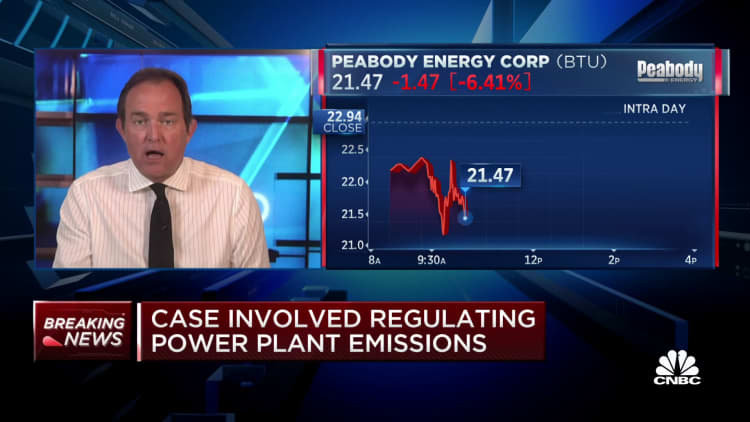
Saltwater wetland, Waquoit Bay Estuarine Research Reserve, Mass.
Photo: Ariana Sutton-Grier, CC BY-ND
The Biden administration on Friday issued a rule that defines which types of waterways in the U.S. will receive federal water quality protections under the 1972 Clean Water Act, repealing a Trump-era rule that federal courts rejected and that environmental groups argued left waterways open to pollution.
The Environmental Protection Agency and the Department of the Army said the revised rule is based on definitions that were in place before 2015, when the Obama administration sought to expand federal protections.
Officials said the rule provides a more durable definition of the “waters of the United States” that receive federal protection and restores shields for hundreds of thousands of rivers, lakes, streams, wetlands and other bodies of water. Federally protected waters qualify for government programs focused on maintaining water quality and preventing oil spills, among other things.
Environmental groups have long argued that efforts to loosen federal water protections would significantly harm the country’s sources of safe drinking water. Farming groups, oil and gas producers, and real estate developers have criticized such regulations as overbearing and burdensome to business, and many supported the 2020 Trump administration rule that attempted to dismantle protections.
Michael Regan, the EPA’s administrator, said in a statement that the agency is “working to deliver a durable definition of WOTUS that safeguards our nation’s waters, strengthens economic opportunity, and protects people’s health while providing greater certainty for farmers, ranchers, and landowners.”
The EPA rule applies federal protections to wetlands, tributaries and other waters that have a solid connection to navigable waters or if wetlands are relatively permanent. The rule also doesn’t impose a certain distance for when adjacent wetlands are protected, as officials said that various factors can affect whether the wetland and the waterway can impact the water quality of each other.
The rule includes changes that clarify certain qualifications for waters that are excluded from regulation, such as wetlands that were converted to cropland before 1985, waste treatment centers and artificially irrigated areas.
The agency said the rule’s definition of waterways will reduce uncertainty from changing regulatory definitions that have “harmed communities and our nation’s waters.”
“While the nation still has significant work to do to fully protect important waters, it’s encouraging to see the country taking a step in the right direction to protect the waters we need for everyone’s health and the environment,” said Jon Devine, director of federal water policy for the Natural Resources Defense Council.
The rule comes ahead of a Supreme Court ruling set for next year that could challenge the EPA’s ability to protect wetlands and other waters and upend Friday’s revisions. The case, called Sackett v. Environmental Protection Agency, challenges the government’s determination that a wetland on private land in Idaho is protected under the Clean Water Act.






